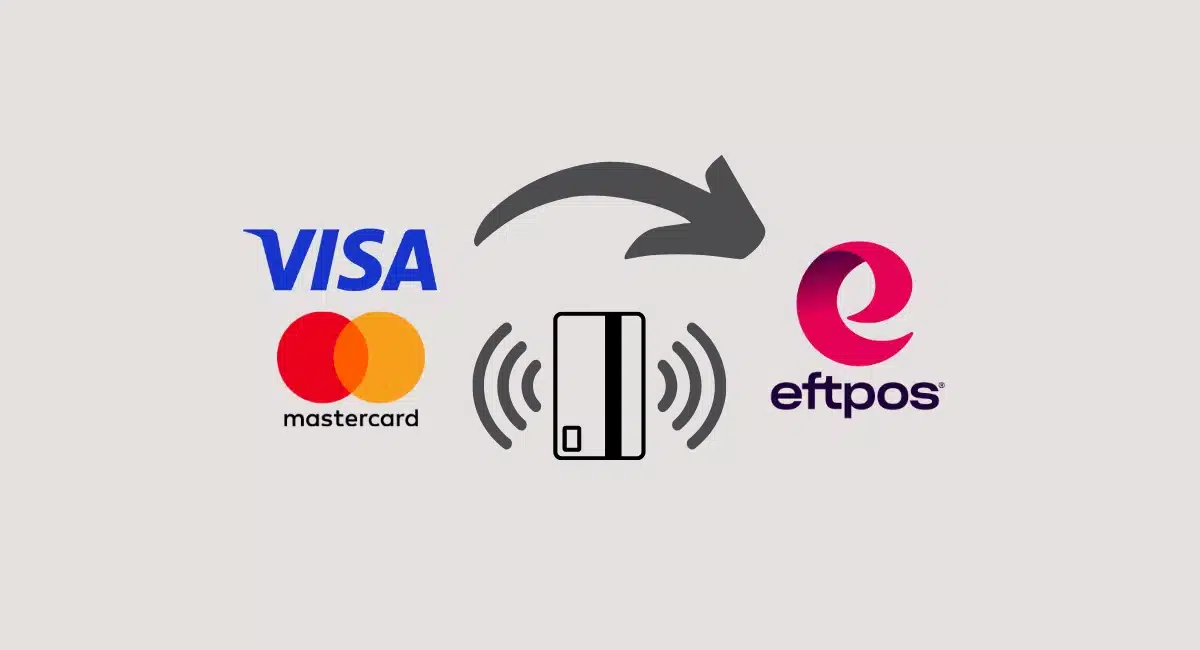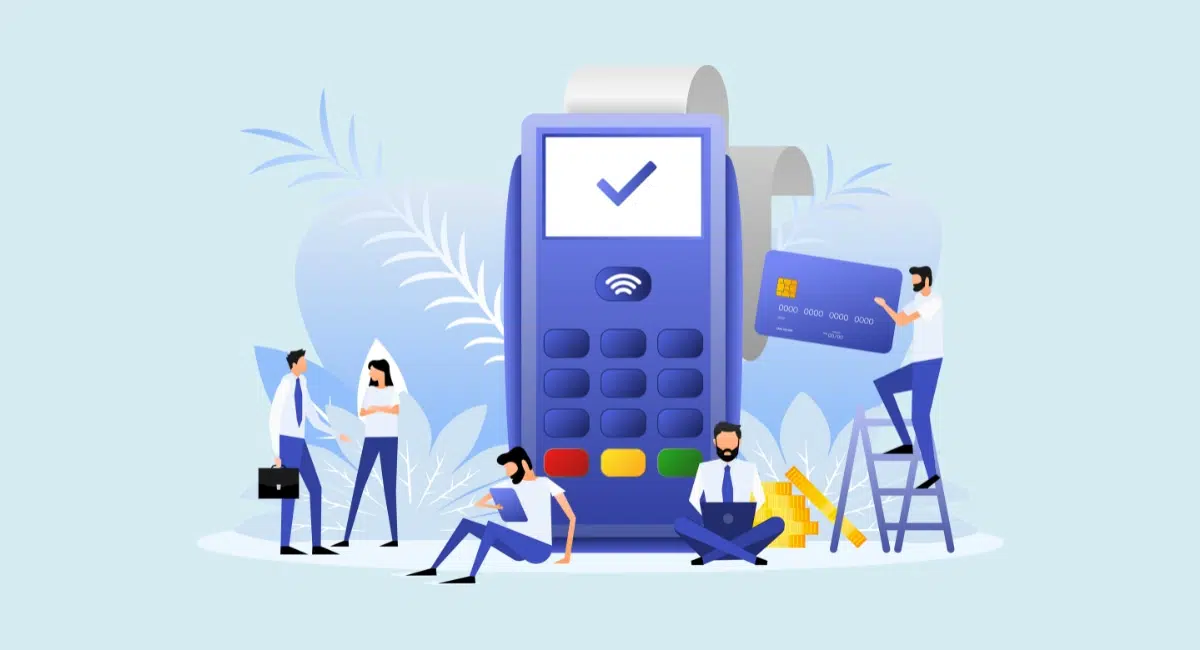As card payments exceedingly trump cash, it’s crucial for merchants to be clear about the fees associated with it, sometimes referred to as ‘merchants fees’.
Accepting debit and credit cards always has a cost due to the processes and technologies involved. The cost of accepting cards varies according to the EFTPOS provider, payment solution, size of business, type of card and more, so explaining merchant fees requires a view of the broader context.
Let’s first start with a basic description of merchant charges, followed by the key characteristics that determine them.
Merchant fees defined
What are merchant fees? They are the charges that merchants pay per card transaction accepted.
Payment companies may call them transaction fee, merchant service fee or card processing fee (among other names). Each of these terms sometimes refers to only a part of the full merchant fee structure.
Any of these payment channels incur merchant fees:
- EFTPOS terminal (via chip, contactless tap or swipe)
- Mail Order and Telephone Order (MOTO) payments (keyed entry by merchant)
- Online checkout in browser or app (cardholder completes their own transaction)
The pricing structure of a merchant’s fees varies greatly and depends on the following:
- Sales channel (above types)
- Payment provider and/or card processor
- Size, type and risk category of your business
- Your transaction volume, typical transaction size and sales history
- Type, card network and country of issue of the accepted card
Some payment companies do not overtly distinguish between these things, instead opting for a fixed rate for all transactions. But behind the scenes, even fixed-fee EFTPOS machines have a true cost consisting of several small fees disguised as one simple rate in the foreground.
eftpos fees are the lowest
The national debit card system in Australia, eftpos, has long been the cheapest and most recommended card payment option in Australia. It uses a domestic banking network to process its cards, so it costs less than international card networks like Visa, Mastercard and American Express.
On average, in-store eftpos card payments cost around 0.3% of the transaction value. To compare, Visa and Mastercard transactions cost 0.5%-0.9% while other card networks have an average cost of 1.3%-1.9% (RBA figures).
In many cases, eftpos merchant fees are just a fixed fee instead of a % rate, whereas other card schemes normally incur a percentage. If the eftpos fee is fixed, like 25¢, it works out cheaper for large transaction values. For small transaction values, like $2, a fixed fee would make a high proportion of the transaction.
Visa and Mastercard generally cheaper
What about the cost of cards in general? The true charges vary between different card schemes/networks (Visa, Amex, JCB, etc.) and types of cards (debit, credit, commercial, personal, etc.).
As a result, payment providers typically offer different percentage rates – sometimes with a fixed fee added – for different types of cards.
Beware that publicised charges may or may not include GST, so when you compare payment products, make sure you have the full cost including any applicable GST.
Generally speaking:
- Visa and Mastercard have lower fees than American Express, Diners Club, Discover, JCB and UnionPay
- Debit cards have lower fees than credit cards
- Premium, business and corporate cards have the highest fees
- Foreign-issued cards have higher/more fees than domestic cards
In Australia, the few exceptions without variable fees include Square and Zeller. Their EFTPOS machines have a fixed fee applicable across all brands and types of cards.
Blended vs interchange plus plus fees
Card types aside, what about the actual fee structure? Broadly speaking, there are two types of pricing: blended fees and interchange++ (interchange plus plus) fees.
Blended fees are the go-to option for small, new or low-volume businesses. They are on average higher, but simpler to understand because they comprise of single or few fixed rates for clearly defined cards.
For example, Zeller charges a single fee of 1.4% for all contactless and chip cards. Tyro offers a mix of rates like 1.1% for Visa and over 1.5% for international cards like American Express and Diners Club.
Then there’s interchange++ pricing that best reflects the true cost of each transaction. This is the bit that gets complicated, since it relates to the different parties involved in card processing.
Interchange++ pricing consists of individual charges incurred by these parties:
- Card issuer: Cardholder’s bank or credit card issuer
- Card scheme/network: Card brand, e.g. Mastercard or Visa
- Acquiring bank/acquirer: Merchant account provider processing and settling payments, e.g. Adyen or Fiserv
- Payment provider: Markup fee added by payment provider, e.g. Tyro or Westpac
The full interchange++ cost of a transaction therefore comprises of all of these:
- Interchange rate: Percentage rate for card issuer
- Scheme fee: Base fee + payment technology fee for card scheme
- Acquirer fee: Fee for acquirer
- Merchant service charge: Markup fee for payment provider (sometimes part of acquirer fee)
Here’s what that could look like for an Australian Visa consumer debit card:
Interchange++ fee example:
0.2% (interchange) + 0.7¢ + 0.01% (scheme fees) + 0.6% (acquirer fee) + 0.30¢ (merchant service charge)
The card schemes (Visa, Mastercard) publish their interchange fees for full transparency.
In comparison, blended fees are simplified charges where the above interchange++ charges are ‘blended’ together to make fewer, more general rates. It could look like this:
Blended fee examples:
1.1% per domestic Mastercard or Visa card transaction
2.9% + 0.4% (cross-border fee) per foreign Amex card transaction
Because interchange++ fees vary a lot and are therefore unpredictable from the merchant’s perspective, blended rates are often preferred by small businesses. On the other hand, interchange++ tends to be cheaper overall, but it’s usually only offered to larger merchants with a high enough sales volume, e.g. over $20k of card transactions processed monthly.
Online fees higher than EFTPOS rates
Merchant fees can refer to the cost of transactions in person, remotely or online. Chip and tap transactions on EFTPOS terminals are the cheapest to accept – but why?
An EFTPOS machine processes chip and NFC (contactless) payments electronically; both very secure forms of card processing. The terminal essentially proves that the card is physically present, with the cardholder physically present. The lowered risk of fraud means banks and card networks charge less for EFTPOS transactions.
Online checkout screens on a phone or computer, on the other hand, require card details to be manually entered. To verify these ecommerce transactions, other more costly security procedures are enforced through an online payment gateway (such as Stripe’s), making merchant fees higher.
Then there are telephone order and mail order (MOTO) transactions. These are keyed-in card transactions completed by the merchant in a virtual terminal on behalf of the cardholder. The higher risk of MOTO payments incur an even higher merchant fee than ecommerce payments completed directly by the cardholder.
Dual-network debit cards and least-cost routing
To encourage more competitive merchant fees from Visa and Mastercard, the Reserve Bank of Australia (RBA) promotes a least-cost routing (also called merchant-choice routing) option enabling merchants to choose which card processing system is used for a dual-network debit card.
Domestic debit cards in Australia are typically both an eftpos and Mastercard or Visa card (co-branded). Since eftpos fees tend to be lower, a merchant saves money by forcing a contactless debit card transaction to be processed via eftpos (the “least-cost” route) instead of Visa.
Least-cost routing, when activated, only works for tap-and-go payments in an EFTPOS machine or online where eftpos is accepted. If the customer inserts a chip card in a terminal, they have the option to choose the Visa/Mastercard option instead.
The RBA is trying to promote uptake among Australian merchants for the system, but not all merchant service providers offer it as an option yet. You can usually activate it if your EFTPOS machine is from a bank, for example NAB or Westpac.
Surcharging: fee paid by customer, not merchant
To save money, some Australian businesses can opt to add a surcharge to transactions. This essentially means that the customer pays the transaction fee if they use a debit or credit card to complete the transaction.
The business can thereby avoid merchant fees, but not other EFTPOS costs like card machine rental and a merchant account contract. Not all payment providers offer a surcharge function.
Requiring cardholders to absorb the merchant fees through surcharging is not necessarily a good thing. Customers can reject it and go elsewhere, potentially leaving you with a cancelled purchase. Moreover, accepting cash (which many consider as “free”) is still an expense with the level of effort and risk involved in dealing with coins and banknotes.
Transaction fees not the only cost
Accepting cards comes with more costs than just transaction fees. These could be hidden or clearly advertised and include:
- EFTPOS terminal rental (e.g. monthly subscription)
- Monthly minimum service charge (min. amount to pay for transactions monthly)
- Settlement fee for bank account payouts
- PCI-DSS compliance costs (card industry requirements)
- Refund fee
- Chargeback fee
In addition, you may have to sign up for a merchant account contract of at least a year, depending on the merchant service provider. Exiting such a contract early nearly always incurs an early cancellation charge that could be hundreds of dollars.




